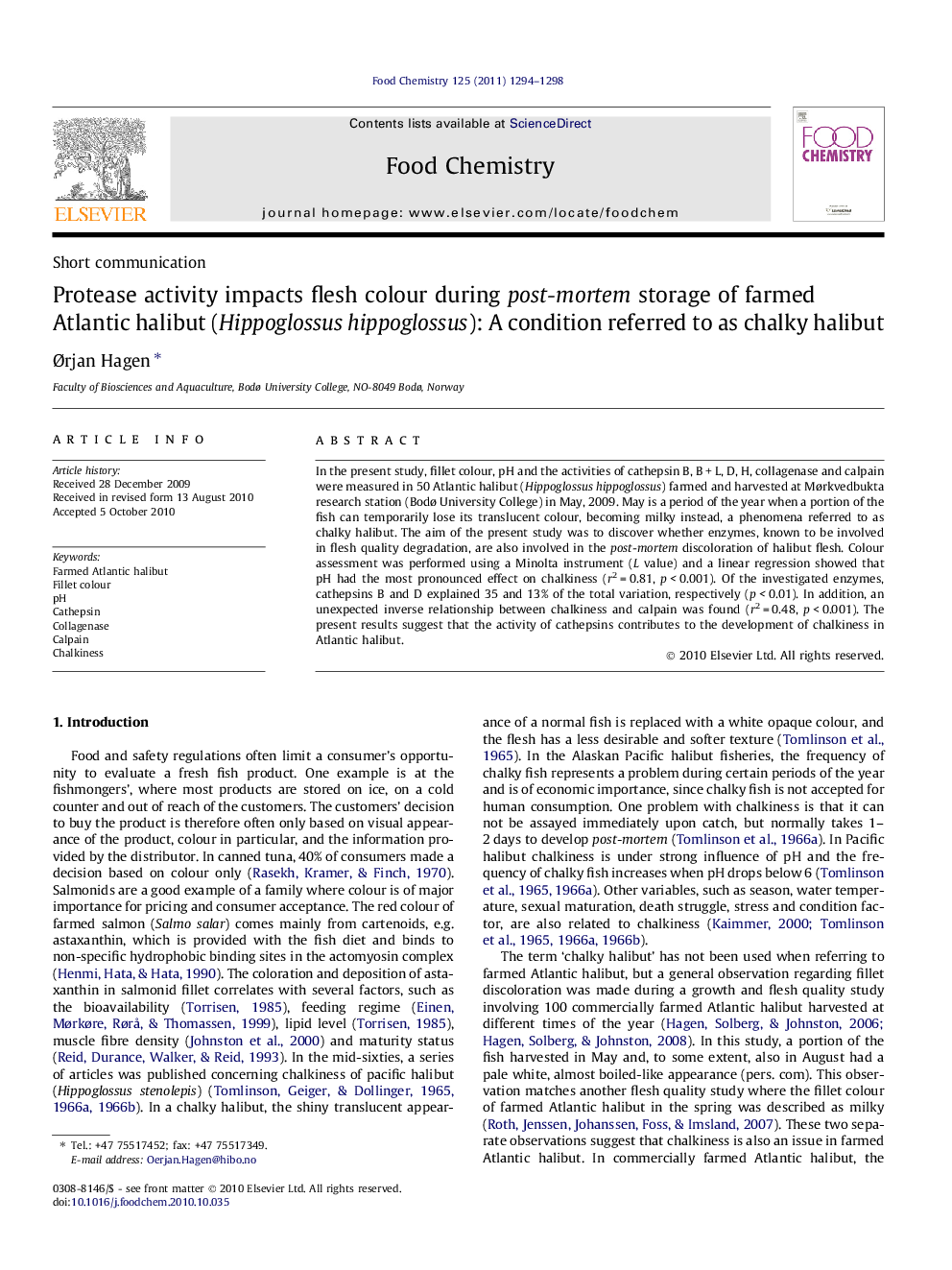| کد مقاله | کد نشریه | سال انتشار | مقاله انگلیسی | نسخه تمام متن |
|---|---|---|---|---|
| 1186487 | 963440 | 2011 | 5 صفحه PDF | دانلود رایگان |

In the present study, fillet colour, pH and the activities of cathepsin B, B + L, D, H, collagenase and calpain were measured in 50 Atlantic halibut (Hippoglossus hippoglossus) farmed and harvested at Mørkvedbukta research station (Bodø University College) in May, 2009. May is a period of the year when a portion of the fish can temporarily lose its translucent colour, becoming milky instead, a phenomena referred to as chalky halibut. The aim of the present study was to discover whether enzymes, known to be involved in flesh quality degradation, are also involved in the post-mortem discoloration of halibut flesh. Colour assessment was performed using a Minolta instrument (L value) and a linear regression showed that pH had the most pronounced effect on chalkiness (r2 = 0.81, p < 0.001). Of the investigated enzymes, cathepsins B and D explained 35 and 13% of the total variation, respectively (p < 0.01). In addition, an unexpected inverse relationship between chalkiness and calpain was found (r2 = 0.48, p < 0.001). The present results suggest that the activity of cathepsins contributes to the development of chalkiness in Atlantic halibut.
Journal: Food Chemistry - Volume 125, Issue 4, 15 April 2011, Pages 1294–1298